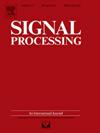Joint jamming perception and transmit waveform design for anti-interrupted sampling repeater jamming
IF 3.4
2区 工程技术
Q2 ENGINEERING, ELECTRICAL & ELECTRONIC
引用次数: 0
Abstract
Interrupted sampling repeater jamming (ISRJ) is a type of intra-pulse coherent jamming based on digital radio frequency memory (DRFM), which has been widely used in jammers in recent years, posing a serious threat to radar detection. Traditional anti-jamming methods are relatively passive, and the jamming suppression performance depends heavily on the accuracy of parameter estimation. Additionally, most waveform design techniques lack the perception of jammer strategies, resulting in performance degradation when suppressing ISRJ. In order to improve radar anti-jamming performance, a scheme for jointing jamming perception and transmit waveform design is developed in this paper. Firstly, bidirectional double-sliding window pulse edge detection and sliding truncated matched filter (STMF) are employed to extract the ISRJ components in the received echo and estimate the relevant parameters accurately. Subsequently, an intra-pulse dual-parameter agile waveform is designed to increase the difference between the target signal and ISRJ. Furthermore, by extracting the interfered sub-pulse segments, filters based on the fractional Fourier transform (FrFT) are constructed to eliminate ISRJ components. Simulation results demonstrate that the proposed method effectively overcomes the ISRJ under different modulation modes with almost no loss of signal energy. When the jamming-to-signal ratio is 9 dB, the method boosts the signal-to-jamming ratio by 30 dB after jamming suppression, ensuring robust target detection.

抗中断采样中继器干扰的联合干扰感知与发射波形设计
中断采样中继器干扰(ISRJ)是一种基于数字射频存储器(DRFM)的脉冲内相干干扰,近年来在干扰机中得到了广泛应用,对雷达探测构成了严重威胁。传统的抗干扰方法相对被动,抗干扰性能很大程度上取决于参数估计的准确性。此外,大多数波形设计技术缺乏干扰策略的感知,导致在抑制ISRJ时性能下降。为了提高雷达的抗干扰性能,本文提出了一种将干扰感知与发射波形设计相结合的方案。首先,采用双向双滑动窗脉冲边缘检测和滑动截断匹配滤波器(STMF)提取接收回波中的ISRJ分量,并准确估计相关参数;随后,设计了脉冲内双参数敏捷波形,以增加目标信号与ISRJ之间的差异。此外,通过提取干扰子脉冲片段,构建基于分数阶傅里叶变换(FrFT)的滤波器来消除干扰子脉冲分量。仿真结果表明,该方法在不同调制模式下都能有效克服ISRJ,且几乎没有信号能量损失。当干扰比为9 dB时,该方法在干扰抑制后将信噪比提高30 dB,保证了对目标的鲁棒检测。
本文章由计算机程序翻译,如有差异,请以英文原文为准。
求助全文
约1分钟内获得全文
求助全文
来源期刊

Signal Processing
工程技术-工程:电子与电气
CiteScore
9.20
自引率
9.10%
发文量
309
审稿时长
41 days
期刊介绍:
Signal Processing incorporates all aspects of the theory and practice of signal processing. It features original research work, tutorial and review articles, and accounts of practical developments. It is intended for a rapid dissemination of knowledge and experience to engineers and scientists working in the research, development or practical application of signal processing.
Subject areas covered by the journal include: Signal Theory; Stochastic Processes; Detection and Estimation; Spectral Analysis; Filtering; Signal Processing Systems; Software Developments; Image Processing; Pattern Recognition; Optical Signal Processing; Digital Signal Processing; Multi-dimensional Signal Processing; Communication Signal Processing; Biomedical Signal Processing; Geophysical and Astrophysical Signal Processing; Earth Resources Signal Processing; Acoustic and Vibration Signal Processing; Data Processing; Remote Sensing; Signal Processing Technology; Radar Signal Processing; Sonar Signal Processing; Industrial Applications; New Applications.
 求助内容:
求助内容: 应助结果提醒方式:
应助结果提醒方式:


